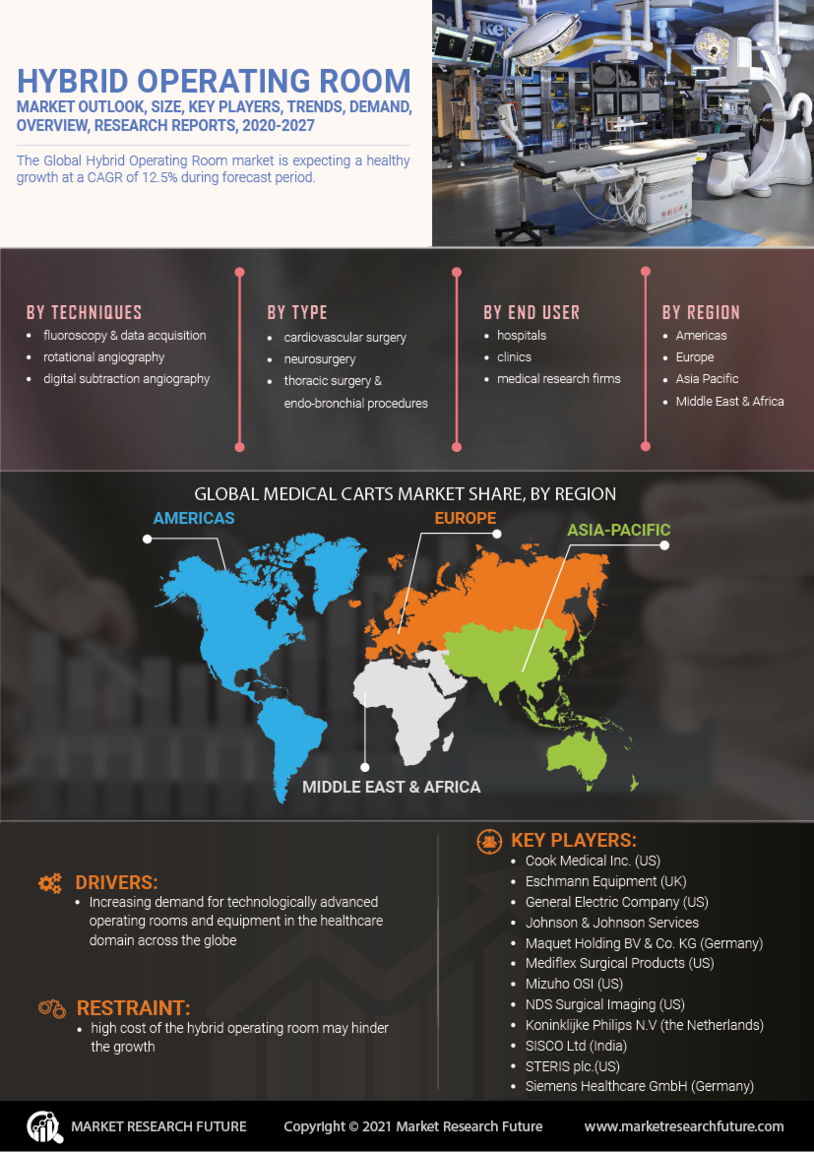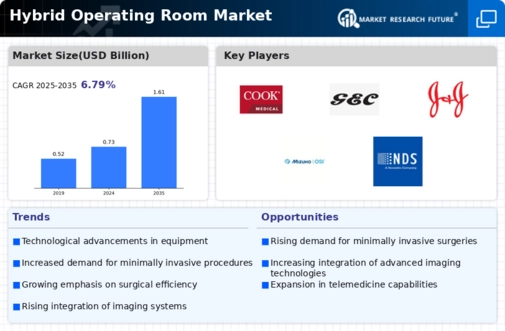Technological Advancements
The Hybrid Operating Room Market is experiencing a surge in technological advancements that enhance surgical capabilities. Innovations such as advanced imaging systems, robotic-assisted surgery, and integrated surgical platforms are becoming increasingly prevalent. These technologies not only improve surgical precision but also reduce patient recovery times. According to recent data, the market for surgical robots is projected to reach USD 20 billion by 2026, indicating a robust growth trajectory. The integration of these technologies into hybrid operating rooms allows for real-time imaging and minimally invasive procedures, which are essential for modern surgical practices. As hospitals and surgical centers invest in these advanced technologies, the Hybrid Operating Room Market is likely to expand significantly, driven by the demand for improved surgical outcomes.
Growing Geriatric Population
The Hybrid Operating Room Market is significantly impacted by the growing geriatric population, which is more susceptible to chronic diseases requiring surgical intervention. As the global population ages, the demand for surgical procedures is expected to rise, necessitating the need for advanced surgical environments. Data indicates that by 2030, the number of individuals aged 65 and older will reach approximately 1.5 billion, creating a substantial market for surgical services. Hybrid operating rooms are particularly well-suited for this demographic, as they allow for complex procedures to be performed with greater efficiency and safety. The increasing prevalence of age-related health issues is likely to drive the expansion of the Hybrid Operating Room Market, as healthcare providers seek to accommodate the needs of older patients.
Increased Focus on Patient Safety
The Hybrid Operating Room Market is increasingly influenced by the heightened focus on patient safety and quality of care. Regulatory bodies and healthcare organizations are emphasizing the need for safer surgical environments, which has led to the adoption of hybrid operating rooms equipped with advanced monitoring and imaging technologies. These facilities are designed to minimize risks associated with surgical procedures, thereby enhancing patient outcomes. Recent statistics indicate that hospitals implementing hybrid operating rooms have reported a 30% reduction in surgical complications. This focus on safety not only improves patient satisfaction but also aligns with the broader healthcare trend of prioritizing quality over quantity. As patient safety remains a top concern, the Hybrid Operating Room Market is likely to benefit from ongoing investments in safety-enhancing technologies.
Rising Demand for Minimally Invasive Surgeries
The Hybrid Operating Room Market is witnessing a notable increase in the demand for minimally invasive surgeries. Patients and healthcare providers alike are recognizing the benefits of these procedures, which include reduced pain, shorter hospital stays, and quicker recovery times. Data suggests that minimally invasive surgeries account for over 50% of all surgical procedures performed in certain regions. This trend is pushing healthcare facilities to adopt hybrid operating rooms that facilitate such surgeries while providing the necessary imaging and surgical tools. The ability to perform complex procedures in a minimally invasive manner is becoming a key differentiator for hospitals, thereby driving the growth of the Hybrid Operating Room Market. As patient preferences shift towards less invasive options, the market is expected to continue its upward trajectory.
Enhanced Collaboration Among Healthcare Professionals
The Hybrid Operating Room Market is benefiting from enhanced collaboration among healthcare professionals, which is essential for successful surgical outcomes. The design of hybrid operating rooms promotes teamwork by integrating various specialties, including surgeons, anesthesiologists, and radiologists, into a single surgical environment. This collaborative approach allows for real-time communication and decision-making, which can significantly improve patient care. Recent studies suggest that surgical teams operating in hybrid environments experience a 25% increase in efficiency compared to traditional operating rooms. As healthcare systems continue to recognize the value of interdisciplinary collaboration, the Hybrid Operating Room Market is likely to see sustained growth, driven by the demand for integrated surgical solutions.


















Leave a Comment